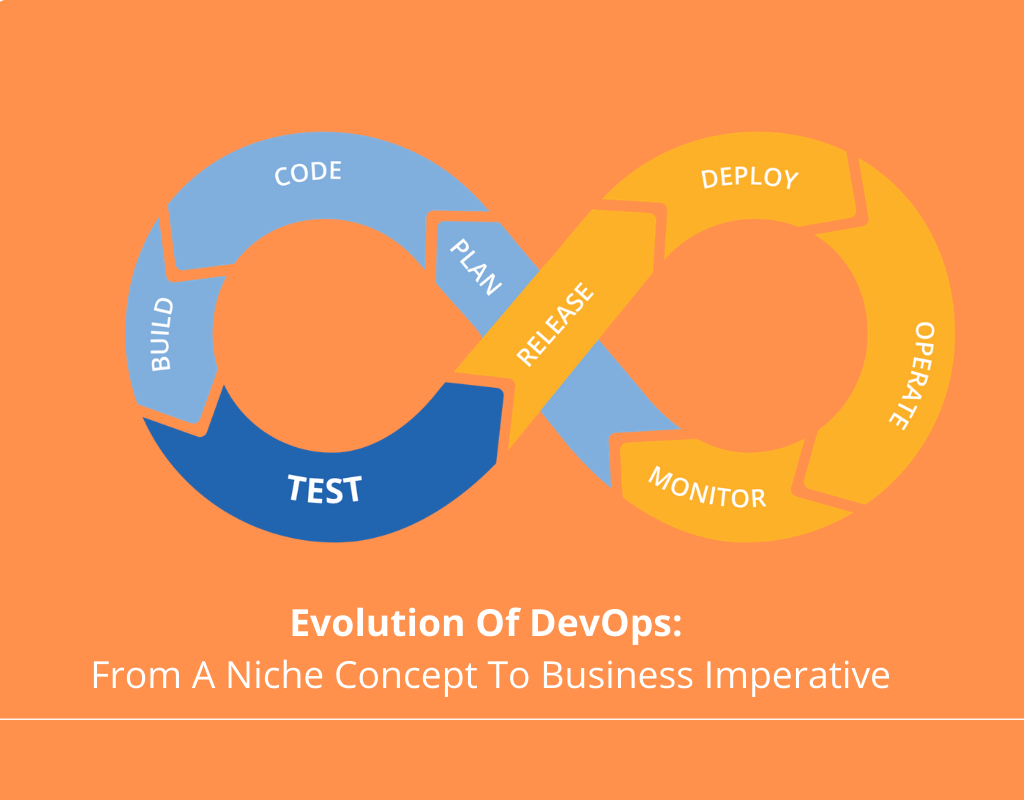For any organization operating in the software development realm, every goal-setting meeting starts and ends with one agenda – faster deployment. DevOps as a tool has enabled such companies to set ambitious goals and quickly get there.
To put it simply, businesses that adopt DevOps services help deploy software 200 times as quickly as the ones that are still watching from the sidelines. Software deployment using DevOps services is marked with faster production cycles, easier management, 60 times fewer failures, and faster recovery. Therefore, it is hardly surprising that the last few years have witnessed many organizations fully embracing DevOps.
So, what is it about DevOps automation and services that elevate the results to such a level of efficiency and speed?
Speed and stability being achieved concurrently
Unlike a traditional software development model where shorter release cycles inevitably mean operating within a largely unstable environment, DevOps solutions foster a development environment where continuous deployment is shadowed with continuous testing and monitoring, test-driven techniques, and business processes are driven by agility and automation. Combining all these factors leads to faster time-to-market delivery and reliable operating environments.
Early detection and faster resolution of errors
Engineers have access to real-time data to track the system’s performance, thus ensuring faster detection and resolution of problems. The collaborative approach to development and constant monitoring leads to the discrepancies in code, infrastructure, and configuration getting highlighted earlier in the development phase.
Innovation outside silos
There was a time when anything innovative and “ahead of the curve” resulted from a ton of time spent in seclusion. Transparency and collaboration was not the hallmark of innovators, but thanks to the agile way of doing things, innovators have conditioned themselves to collaborate across teams. Today, barriers have been brought, and developers and operations work as one team using the most advanced technological tools. Agility is the buzzword, and it has made the environment much more conducive to creating new things together. DevOps automation is one concept, in particular, that has boosted the interaction between different teams and individuals and added a sense of structure to how new processes are defined and carried out.
Key Metrics to Measure the Success of DevOps Solutions?
While DevOps requires companies to gauge their resources so that transitioning to a model that can facilitate fast and continuous delivery is easy, it is imperative to track some key DevOps metrics so that you don’t find yourself going off the rails.
- Lead time: DevOps-powered deployment keeps shorter release cycles as its key DevOps metrics. Lead time is measured from the day development starts to the day of deployment. Once you have figured out the average time to production, it can be used as a benchmark for future deployments.
- Automated test pass %: The hallmark of an agile development environment is frequent code changes and continuous unit and functional testing. Now, automation is one of the critical drivers of DevOps, and code changes can often cause tests to break, so it becomes almost imperative to track the effectiveness of the automated tests continuously.
- Defect escape rate: DevOps practices aim to ship code faster than ever, which increases the risk of software defects passing undetected during QA and finding their way to production. So keeping a tap on the defect escape rate is a crucial metric when incorporating DevOps, as you want to keep bugs out of production.
- Service level agreements: While most organizations have service level agreements (SLA) as their fundamental agreements with their customers, tracking compliance with those SLAs might be lacking. It is essential that whether or not you have formal SLAs, you do operate as per certain service agreements that serve as formal terms and conditions as per your work with customers.
- Failed deployments: Businesses do their best to ensure deployments do not cause an outage or software does not malfunction or crash for users, but as the age-old saying goes – hope for the best and prepare for the worst. Deployment may fail at some point in time or other; it thus becomes imperative not to let them escalate into a disaster. To this end, companies should track the occurrence over time, which can also be called tracking mean time to failure.
- Application performance: Delivering consistently high performance is the most important metric for every application deployed. Therefore, pre-deployment checks are recommended to identify possible performance problems, hidden issues, and other discrepancies. In addition, even after an application is deployed, it would help to keep an eye out for any changes in its performance. Observing deviations in how specific SQL queries or web service calls are used is expected. Several third-party tools are available to help you identify the problem.
- Meantime to detection (MTTD): As said earlier, failures and issues will likely happen despite the best efforts to ensure otherwise. So when an issue creeps up, it must be identified timely so it does not escalate into a major disaster. The monitoring systems should be in place, and it should also be ensured that they are being maintained for continuous performance so that issues get spotted without fail or delay. Also, do not waste time to resolve issues once spotted.
- Mean time to recovery (MTTR): Businesses that are prepared for failures have the necessary infrastructure to ensure quick recovery from failures. While you are strategizing every second to ensure zero to minimum failures occur, make it a priority to create a system that does not let failures linger on and hamper the business with long-term repercussions.
Impact of Bringing Automation through DevOps on Business?
DevOps is proving to be instrumental in blurring the lines between requirement gathering and production, thus transforming the production cycles in an unprecedented manner. The DevOps workflows enable synchronization between production cycles and IT mechanisms within an organization, thus streamlining them. In this context, the business benefits of DevOps are immense.
As per the maturity model created by Coleman Parkes and CA Technologies, businesses that have overcome technological and infrastructure challenges use version control for all production artifacts was highly correlated with crucial IT performance metrics: deployment frequency, lead time for changes, and mean time to recover.
Moreover, using continuous delivery practices- deployment automation, continuous integration, testing, and version control for all production artifacts- predicted lower levels of deployment pain, higher IT performance, and lower change failure rates.
DevOps has been instrumental in giving even large enterprises room to be scalable. The automation functions have further led to cost savings and allowed companies to focus on their core functions and improve the overall Key Performance Indicators (KPI). Advanced DevOps adopters can deliver new capabilities to market 42% faster- Coleman Parkes.
This directly translates into enhanced customer loyalty, as customer satisfaction has increased due to the better quality of apps.
Conclusion
With the clear-eyed business benefits of DevOps that a host of critical metrics can easily measure, more and more businesses are incorporating DevOps practices and building highly mature models to maximize results.
DevOps enables enterprises to eliminate the traditional linear processes and replace them with processes characterized by synchronicity and symmetry. With so many business benefits of DevOps to achieve, it is no surprise that DevOps tools are emerging as powerful enablers of digital transformation plans for organizations. Click here to read DevOps Case Studies.
[ALSO READ: WHAT IS DEVOPS – A BEGINNER’S GUIDE]
To know more about how you can seamlessly transition from traditional development methodology to DevOps Solutions, download this free guide.





